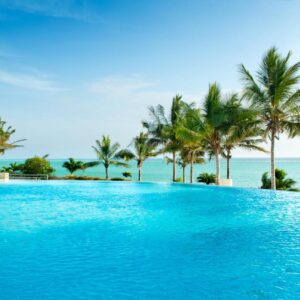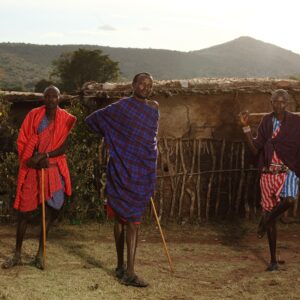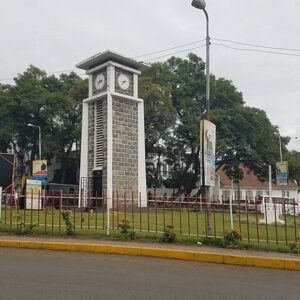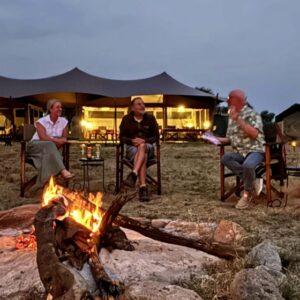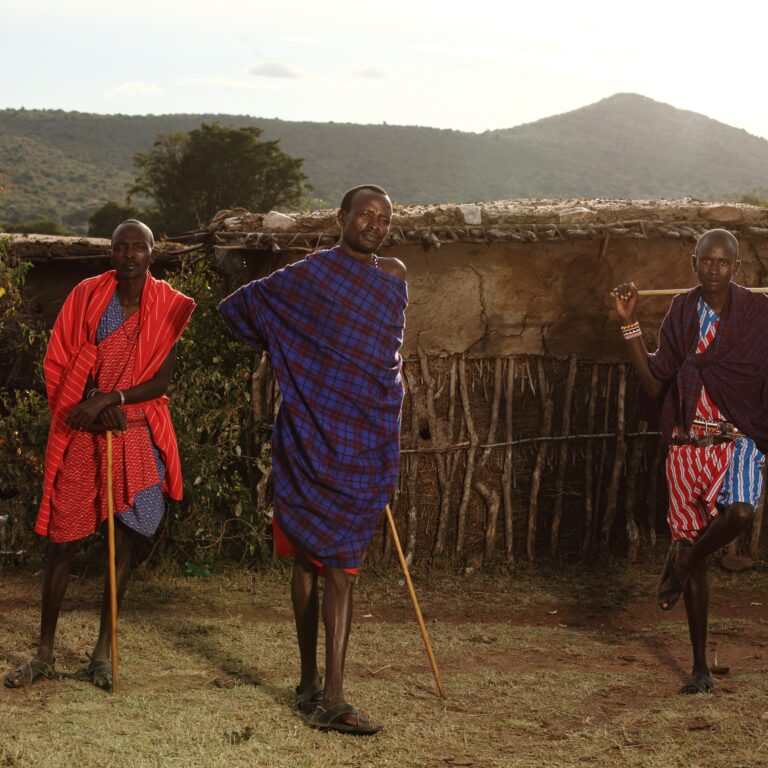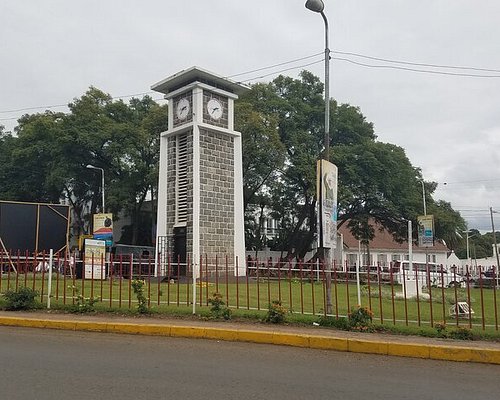Everything You Need to Know About Mkomazi National Park.
In the shadow of the mighty Kilimanjaro, often overshadowed by its more famous counterparts on Tanzania’s Northern Circuit, lies a wilderness of stark, understated beauty: Mkomazi National Park. This lesser-known jewel is not about the thundering herds of the Great Migration or the sheer wildlife density of Ngorongoro. Instead, Mkomazi offers something profoundly different: a quiet, untamed expanse where pioneering conservation efforts are bringing critically endangered species back from the brink, and where the raw, arid landscapes evoke a sense of timeless Africa.
Mkomazi is a testament to resilience, a place where the wild finds refuge, and where discerning travelers can experience an intimate safari far from the crowds. It’s a destination for those who seek not just a wildlife checklist but a deeper connection to conservation, a unique ecosystem, and the profound satisfaction of witnessing nature’s comeback story.
1. Overview – Mkomazi National Park
Situated in northeastern Tanzania, bordering Tsavo West National Park in Kenya, Mkomazi National Park spans over 3,234 square kilometers (1,249 sq mi) across the Kilimanjaro and Tanga regions. Established as a game reserve in 1951, it was elevated to national park status in 2008, signifying its growing importance in Tanzania’s conservation landscape.
Mkomazi’s ecosystem is unique, representing a transition zone between the arid regions of the Sahara Desert to the north and the lusher, central African zones. This unique biogeographical connection results in a distinctive mix of flora and fauna, including species not found elsewhere in Tanzania. The landscape is characterized by semi-arid savanna, acacia-commiphora woodlands, and scattered baobab trees, interrupted by low, rocky hills. The dramatic backdrops of the Pare and Usambara Mountains, and on clear days, the snow-capped peak of Mount Kilimanjaro, add to its scenic allure.
At its core, Mkomazi is a story of rehabilitation and success, primarily driven by its two highly successful breeding programs for critically endangered species: the Black Rhino and the African Wild Dog.
2. Safari Reviews – Mkomazi National Park
Safari reviews for Mkomazi National Park consistently highlight its unique charm: tranquility and exclusivity. Visitors often praise the experience of having vast expanses of wilderness almost entirely to themselves, a stark contrast to the busier northern parks. Reviewers frequently describe it as a “hidden gem” or a “superb wilderness experience” for those who appreciate solitude and a focus on specific, unique wildlife.
The conservation efforts, particularly around the black rhino and wild dog sanctuaries, are a major draw and receive strong positive feedback, with visitors finding the opportunity to learn about and potentially view these rare species incredibly rewarding. Birdwatching is also highly rated due to the park’s diverse avian population.
While wildlife sightings might require more patience than in the highly concentrated Ngorongoro Crater, the reward is often a more intimate and undisturbed encounter. Some reviews mention the challenge of spotting all “Big Five” (leopards and lions can be elusive), but the overall sentiment is one of satisfaction for those seeking a different, more conservation-focused, and peaceful safari experience. It’s recommended for repeat safari-goers or those combining it with more traditional parks.
3. Wildlife & Animals – Mkomazi National Park
Mkomazi’s wildlife is characteristic of the arid and semi-arid zones, adapted to its unique environment. While it may not boast the sheer numbers of the Serengeti, it offers compelling sightings of specialized species and critically endangered animals.
Critically Endangered Species (Conservation Success Stories):
Black Rhino: Mkomazi is a vital sanctuary for the critically endangered Eastern Black Rhino. Thanks to dedicated conservation efforts and a successful breeding program (initiated with animals from South Africa), there is a growing population within secure, protected enclosures. Visitors have a unique and impactful opportunity to witness these magnificent creatures.
African Wild Dog: Mkomazi is also home to a successful breeding and rehabilitation program for the endangered African Wild Dog. While they are still a species that requires luck to spot in the wild, the efforts in Mkomazi have contributed significantly to their numbers in Tanzania, with some released into the Serengeti.
The “Big Four” (often sighted, excluding elusive leopard):
Elephants: Increasing herds are being sighted as the park’s ecosystem recovers.
Buffalo: Present in scattered herds.
Lions: Resident prides are present, though sightings require dedicated searching.
Leopards: Present but highly elusive, as in most dry-country parks.
Dryland Adapted Species: The park is particularly strong for species adapted to arid conditions, which are often less common in the wetter northern parks:
Gerenuk: The “giraffe gazelle,” known for standing on its hind legs to browse.
Fringe-eared Oryx: Striking antelopes with long, straight horns.
Lesser Kudu: Beautiful spiral-horned antelope, found in dense thickets.
Eland: Africa’s largest antelope.
Hartebeest, Impala, Grant’s Gazelle, Dik-dik, Zebra, Giraffe, and Warthog are also common.
Other Predators: Besides lions and leopards, you might encounter cheetahs, hyenas, and various smaller carnivores.
4. Birds – Mkomazi National Park
Mkomazi is an important bird area, boasting an impressive list of over 450 recorded bird species. Its diverse habitats, from acacia woodlands to rocky hills and seasonal swamps, attract a wide variety of avian life, including many dry-country specialists.
Dryland Specialists: The park is a haven for birds typically found in arid environments, offering unique photographic opportunities. Look for species like:
Somali Long-billed Crombec
Friedmann’s Lark
Yellow-bellied Eremomela
Pink-breasted Lark
Buff-crested Bustard
Northern Grey Tit
Raptors: The skies are patrolled by a variety of birds of prey, including various eagles, buzzards, and vultures.
Ground Birds: Species like the Kori Bustard and various francolins and guinea fowl are common on the plains.
Water Birds: Seasonal waterholes and river systems attract various storks (African Open-billed Stork, Marabou Stork), ibises, and ducks.
Other Notable Birds: White-headed Mousebird, Long-tailed Fiscal, White-browed Coucal, Black-faced Sandgrouse, Scaly Chatterer, and several vibrant kingfisher and bee-eater species.
5. Best Time to Visit – Mkomazi National Park
Mkomazi National Park offers its best wildlife viewing during the dry season (June to October).
Dry Season (June to October). Pros: Vegetation is sparser, making animals easier to spot as they congregate around predictable water sources. Weather is generally dry, sunny, and pleasant, with clear skies perfect for viewing Mount Kilimanjaro in the distance. Cons: The landscape can be quite dusty and parched, though this adds to the raw, wild aesthetic.
Wet Season (November to May). Pros: The landscape transforms into a lush, vibrant green, offering stunning photographic backdrops, especially for landscape shots. Fewer tourists mean a more exclusive experience. Birdwatching is at its peak with the arrival of migratory species.
Cons: Wildlife can be more dispersed and harder to spot due to thicker vegetation. Roads can become muddy and challenging to navigate, and daily short showers or thunderstorms can occur. For optimal wildlife viewing, particularly for the black rhino and wild dog, the dry season is preferred. For birdwatching and lush scenery, the wet season has its own unique appeal.
6. Weather & Climate – Mkomazi National Park
Mkomazi National Park experiences a semi-arid climate, characterized by distinct dry and wet seasons.Dry Season (June to October):
Temperatures: Days are generally warm to hot, averaging 27-30°C (81-86°F). Nights are cooler, sometimes cold, dropping to around 16°C (61°F).
Rainfall: Very little to no rainfall, resulting in dry, dusty conditions.
Wet Season (November to May):
Short Rains (November to December): Characterized by short, localized showers, often in the afternoon. Temperatures remain warm, around 30°C (86°F), with nights around 19°C (66°F).
Long Rains (March to May): The wettest period, with heavier, more consistent rainfall, often in the form of afternoon thunderstorms. These are the cloudiest and most humid months.
Overall: The climate is generally warm to hot throughout the year. Due to the aridity, humidity is typically lower than coastal areas. Always pack layers to account for temperature fluctuations between daytime and cooler mornings/evenings.
7. Getting There – Mkomazi National Park
Mkomazi National Park is relatively accessible, particularly for those combining it with a Kilimanjaro climb or heading to the coast.
By Road:
Mkomazi is approximately 120 kilometers (75 miles) east of Moshi town, making it a viable day trip or short safari extension from the Kilimanjaro region.
From Arusha, the drive takes around 3-4 hours.
It’s also accessible from Dar es Salaam, taking about 5-6 hours by road along the main highway towards Moshi/Arusha. The park entrance (Zange Gate) is just 6 km from the town of Same.
By Air:
The closest major airport is Kilimanjaro International Airport (JRO). From JRO, it’s about a 2-2.5 hour drive to Mkomazi.
While there isn’t a direct airstrip within the park for scheduled flights, visitors can fly into nearby regional airstrips or opt for private charter flights for more direct access.
8. Malaria & Safety – Mkomazi National Park
Malaria: Mkomazi National Park is located in a malaria risk zone. It is crucial to consult your doctor or a travel clinic at least 4-6 weeks before your trip for advice on malaria prophylaxis (anti-malarial medication). In addition:
Use insect repellent containing DEET (or an effective natural alternative), especially at dawn and dusk.
Wear long sleeves and trousers in the evenings to minimize exposed skin.
Sleep under mosquito nets if provided by your accommodation.
Safety:
Wildlife: As with any national park, you are in a wild environment with dangerous animals. Always remain inside your safari vehicle unless at designated safe areas (e.g., picnic spots) and never without your guide’s explicit permission and presence.
Listen to your Guide: Your safari guide is highly trained and experienced. Always follow their instructions meticulously regarding animal behavior and safety protocols.
Unfenced Camps: Some accommodations within or near the park may be unfenced. Always accept an escort from lodge staff to and from your room after dark, as animals can roam freely.
Rhino Sanctuary: When visiting the black rhino sanctuary, strict rules are in place for your safety and the rhinos’ protection. Always adhere to ranger instructions.
Travel Insurance: Comprehensive travel insurance, including medical evacuation, is absolutely essential for any safari to Tanzania.
9. Accommodations – Mkomazi National Park
Accommodation options within and around Mkomazi National Park are fewer than in the Northern Circuit, contributing to its exclusive feel.
Babu’s Camp: Often considered the premier luxury tented camp within the park. It offers a classic, intimate tented safari experience with comfortable en-suite facilities, typically located amidst baobab trees. Known for excellent guiding and proximity to wildlife.
TANAPA Bandas/Rest Houses: The Tanzania National Parks Authority (TANAPA) operates basic accommodation facilities at the Zange area (park headquarters). These offer simple rooms with basic amenities and are a good budget option.
Public Campsites: For the most budget-conscious, public campsites are available within the park, requiring visitors to bring their own camping gear or use a safari operator that provides it.
Lodges/Motels in Same Town: Just outside the park gate (around 6 km from Zange Gate), the town of Same offers more basic motel and lodge options (e.g., Elephant Motel, Orlando Lodge) that serve as a base for day trips into the park.
Eco-lodges in Usambara Mountains: For those extending their trip, some eco-lodges in the nearby Usambara Mountains (like MamboViewPoint Eco Lodge) can be combined with a Mkomazi visit.
10. Safari Packages – Mkomazi National Park
Mkomazi National Park is typically included in safari packages as a day trip from Moshi or Arusha, or as a 2-3 day extension to a Northern Circuit safari, or even as part of a longer, more adventurous itinerary focusing on Tanzania’s lesser-visited parks or combining safari with trekking the Usambara Mountains or a beach stay in Pangani.
Day Trip: Ideal for visitors with limited time, especially those in Moshi (e.g., after a Kilimanjaro climb), wanting a quick taste of a unique Tanzanian safari.
2-3 Day Safari: Allows for more in-depth exploration, including dedicated time at the rhino and wild dog sanctuaries, and experiencing the park’s diverse landscapes. This often includes an overnight stay at Babu’s Camp or a public campsite.
Combined Packages:
Discover Mkomazi & Northern Circuit: Adds a unique, conservation-focused element to the classic Serengeti-Ngorongoro itinerary.
Explore Mkomazi & Usambara Mountains: Combines dryland safari with lush mountain hiking and cultural experiences.
Unique Mkomazi & Coastal Relaxation: Easy road access to the coast (e.g., Pangani) for a beach extension.
Budget & Mid-range: Options are available via public campsites or lodges in Same town.
Luxury: Focused around Babu’s Camp for an intimate, high-quality experience within the park.
Family/Honeymoon/Seniors/Student: Packages can be tailored by operators, but Mkomazi’s more rugged and specialized nature might appeal more to those with a specific interest in conservation or a quieter safari.
11. Packing List for Mkomazi National Park
Given Mkomazi’s climate and activities, here’s a tailored packing list:
Clothing:
Neutral Colors: Khaki, olive green, brown (avoid bright colors, white for game drives).
Lightweight, breathable shirts: 2-3 long-sleeved (for sun/insect protection) and 2-3 short-sleeved.
Trousers: 2 pairs of lightweight safari trousers (convertible are great). Avoid shorts on game drives to protect from sun/dust/insects.
Warm Layer: 1 fleece/sweater/light jacket for cool mornings and evenings.
Rain Jacket/Poncho: Lightweight, especially during shoulder/wet seasons.
Swimwear: If your accommodation has a pool.
Footwear:
Comfortable Closed-Toe Shoes: Sturdy sneakers or light hiking boots (well broken-in) for game drives and any walking activities.
Sandals/Flip-flops: For relaxing at camp.
Headwear & Eye Protection:
Wide-brimmed Safari Hat: For sun protection.
Sunglasses: Essential for glare.
Health & Toiletries:
Personal Medications & Basic First-Aid Kit.
Malaria Prophylaxis: As advised by your doctor.
Insect Repellent (with DEET): Crucial.
High SPF Sunscreen & Lip Balm with SPF.
Moisturizer & Hydrating Wipes: For dry/dusty conditions.
Hand Sanitizer.
Photography & Electronics:
Camera with Telephoto Lens: For wildlife (at least 300mm+).
Spare Batteries & Memory Cards: Essential.
Chargers & Universal Travel Adapter (Type G/D).
Binoculars: Highly recommended for spotting wildlife.
Headlamp/Flashlight: For use in camp at night.
Dust Protection for Camera Gear: Rain cover, plastic bags, lens cleaning kit.
Miscellaneous:
Small Daypack: For daily essentials.
Reusable Water Bottle.
Notebook & Pen.
Small Amount of Cash: For tips and local purchases.
Duffel Bag: For main luggage, as soft-sided bags are often preferred for internal transfers.
12. Mkomazi National Park FAQs
What is Mkomazi National Park famous for? Mkomazi is primarily famous for its crucial conservation programs for the critically endangered Eastern Black Rhino and the endangered African Wild Dog. It’s also known for its unique dryland adapted species and tranquil, uncrowded safari experience.
Can I see the Big Five in Mkomazi National Park? You can see the “Big Four” (lion, elephant, buffalo, rhino) with good chances for rhino due to the sanctuary. Leopards are present but highly elusive, making the “Big Five” harder to complete compared to other parks.
Is Mkomazi National Park worth visiting? Yes, for travelers seeking a unique, quieter, and more conservation-focused safari experience away from the crowds of the Northern Circuit. It’s particularly rewarding for those interested in seeing black rhinos and wild dogs, or who appreciate dryland adapted species and birdlife.
How far is Mkomazi from Kilimanjaro? Mkomazi National Park is relatively close to Mount Kilimanjaro, approximately 120 kilometers (about 75 miles) east of Moshi town, which sits at the base of Kilimanjaro. This makes it an excellent extension for Kilimanjaro trekkers.
Are walking safaris allowed in Mkomazi? Yes, walking safaris are permitted in Mkomazi National Park, offering a unique opportunity to explore the bush on foot with an armed ranger, providing a different perspective of the ecosystem and tracking wildlife signs.
Mkomazi National Park is a compelling testament to nature’s enduring power and human dedication to conservation. It’s a safari destination that promises not just sightings, but stories – of resilience, recovery, and the profound beauty of Africa’s untamed spirit.

